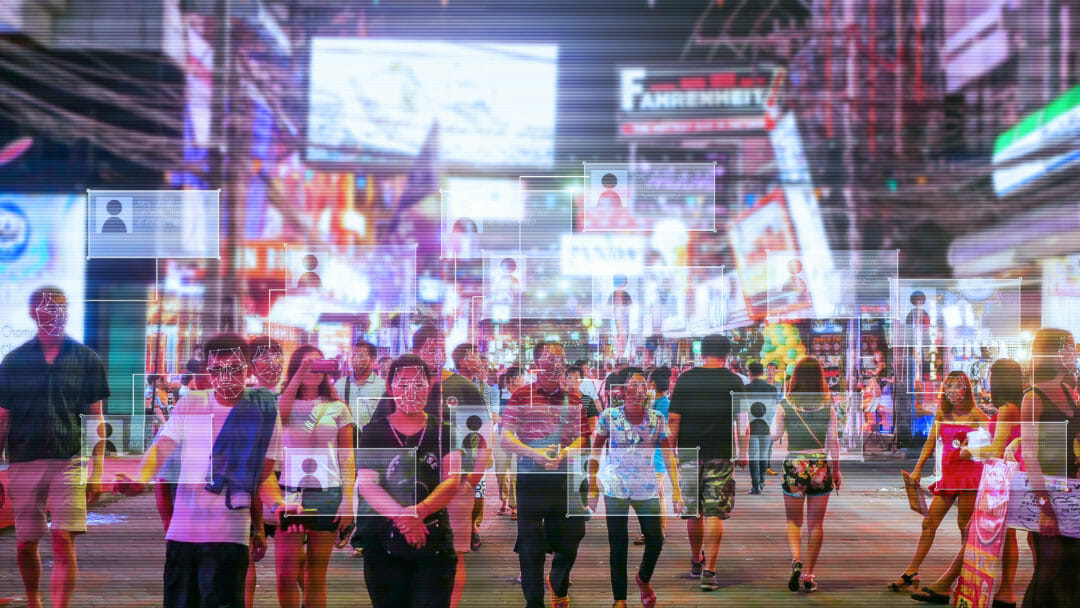Facial recognition is emerging rapidly in many sectors as people apply it to security, marketing and more. Consumer privacy is, not surprisingly, a subject that comes up frequently in discussions about this topic. Here are some privacy-related matters for IT professionals to be aware of as facial recognition technology becomes more common.
Facial recognition laws vary at the state and local levels
In the United States, the legal applications for facial recognition vary depending on state legislation. For example, California, Oregon and New Hampshire prohibit using facial recognition-equipped body cameras. In Detroit, people can only use facial recognition technology when investigating violent crimes or home invasion incidents. A proposal in Portland, Oregon may ban the use of facial recognition by governments and private businesses.
However, the varied legislation in the U.S. hasn’t stopped companies from moving full speed ahead with facial recognition technology. Intel uses it, as well as software that reads license plates, in various states. It does so to increase security and ensure that people onsite have the right to be there.
The company will store the information in its data centres. It also clarified that while it will keep data about most visitors for 30 days, it will retain the material longer on people denied entry.
Businesses that wish to minimise facial recognition privacy concerns among the public or employees should strive to be as transparent as possible when describing data usage or storage specifics. That kind of precise information helps everyone feel more informed about what’s ahead.
Striking a balance between security and privacy is the best approach
People are often uncertain about unfamiliar things, so it makes sense that facial recognition concerns some of them. Although they undoubtedly saw facial recognition tech demonstrated in James Bond or science-fiction movies, it’s now in the real world.
Candy Wu is the vice-president of CloudWalk, a company deploying facial recognition technology. The company currently has Chinese law enforcement bodies and banks among its clients. Wu recognises that privacy is a sensitive issue nowadays, and she recommended that both private companies and governments weigh the elements of data protection and public safety before moving forward with using the technology.
Why a data protection officer is needed within your company
Focusing on the benefits of facial recognition could help
A perspective that people should try to maintain for any facial recognition privacy concerns that crop up is that companies already have lots of data on them, and they got it through consent. When individuals browse the internet, buy something in a shop, utter a command to their smart speaker or use an online database to pay a local fine, all those actions require data collection and storage.
Even people who are initially resistant to new technology often come around when they see the convenience it gives them compared to older methods. For example, individuals who were wary about using online banking now do it regularly because they appreciate being able to check their account anytime, plus quickly transfer money and pay bills.
One promising application of facial recognition relates to event check-ins. Keller Williams Realty recently offered that possibility to a conference attended by more than 1,300 people. In addition to allowing attendees to get their badges faster, facial recognition provided a personalised experience by giving guests their agendas and session information contained on the identification items.
In another application of facial recognition data, people who eat at a particular restaurant in China can “smile to pay” while visiting dedicated kiosks. However, a person must go through a multistep process if they choose that option, including verifying a phone number.
The restaurant caters to “urban professionals”, and it’s easy to envision a scenario where a person stops in for a meal during a lunch break and wants to get in and out as efficiently as possible. Or, a person may not want the hassle of fumbling in a bag to find a wallet and produce the physical payment method.
Can collaboration elevate women in the payments industry?
Making traditional options available could increase consumer readiness
Many people are excited about how facial recognition could improve their lives. One effective way to cater to those who aren’t entirely on board with it yet is to allow them to take part in activities without consenting to facial recognition. Going back to the Keller Williams Realty event, people did not have to submit facial recognition data and could check-in the old-fashioned way instead.
That was a smart approach to take. People who were not yet comfortable with facial recognition could still attend the event. But, as they saw the personalised content and the streamlined process enjoyed by those who opted for the high-tech choice, many likely decided they’ll use it at the next gathering if it’s made available.
Keeping people well-informed reduces negative assumptions
When it’s impossible to give people two choices, the next best way to go about things is to give individuals as much information about the facial recognition process as possible. Companies should provide them with straightforward, easy-to-understand information. Many people with facial recognition privacy concerns have them because they wonder whether the respective businesses have done enough concerning data protection.
Facial biometrics: assuring genuine presence of the user
Giving details about why a company collects facial recognition data, how long it keeps it, and where, can assure people that the entity has put careful thought into their plans and is not being haphazard with its processes and reasoning. Also, when people can easily access information about data usage within the bounds of facial recognition, they’re more likely to conclude that a company is being upfront and cares about its customers.
Apply facial recognition technology with care
There are already plenty of reasons why a company might decide to use facial recognition technology. The ideal applications for it directly support business goals while safeguarding privacy and being mindful of any regional or local legislation specifics.







